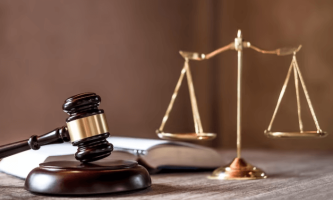Understanding Personal Injury Claims: A Step-By-Step Guide

While navigating the aftermath of an accident that leaves you injured can feel bewildering, knowing the claims process can empower you during recovery. Dealing with medical care and adjusting to possible lifestyle alterations amid injury may seem daunting. However, understanding how to file a personal injury claim is pivotal for obtaining proper compensation. This guide outlines the key stages of pursuing a personal injury case to prepare you. Consulting a long term disability attorney can also offer help if injuries impact work abilities.
The steps begin with collecting critical documents like medical records and incident details. You’ll then determine whether to negotiate directly with insurers or involve attorneys experienced in personal injury law. With their expertise, legal representation assists in building a solid claim profile. Proper documentation strengthens your position for settlement discussions or trial if needed. While focusing on health is a top priority after an accident, being proactive regarding compensation through this process can alleviate financial concerns during rehabilitation.
The Foundation Of Your Claim
The journey towards a thriving personal injury claim first requires comprehending that the core of such claims rests upon carelessness. To win your case, you must illustrate that another party’s failure to take care or improper behavior was exactly what brought about your harm. This method starts at where the mishap occurred. To clarify, proving negligence demands displaying that the opposing party owed you a duty to act carefully, that they breached this duty by behaving without precaution, directly causing you to become injured. Commencing the accumulation of evidence at the scene allows thoroughly documenting the circumstances surrounding how the incident transpired, aiding in substantiating your position of another’s culpability being the sole reason for your wounds.
Documenting The Incident And Injuries
Right after the mishap, your primary concern should be looking for clinical consideration. Not exclusively is this basic for your wellbeing, yet it likewise sets up a recorded connection between the accident and your wounds. Subsequent to your initial restorative evaluation, it’s essential to keep on chronicling your recuperation procedure, including take after up visits, treatments, and any progressions in your well-being condition.
This permits you to demonstrate proof of your wounds and how they influence you more than once. Continuously meeting with your doctor can likewise help them screen how you’re recuperating and if any extra consideration may be expected.
Gathering Evidence
At once, commence assembling proof from the crash site. This involves snapping pictures, acquiring witness accounts, and procuring a duplicate of the police report on the off chance that it is pertinent. Getting this sort of proof is invaluable in constructing a solid establishment for your case. The evidence gathered straightaway from the scene can give key data about conditions encompassing the occasion and help illuminate what occurred.
Witness explanations are additionally critical as they can recognize subtleties that may somehow or another be missed. By recording subtleties promptly through photographs and records, important subtle elements won’t be forgotten with time. Having this early assemblage of proof assembled lays the establishment for a strong case.
Legal Representation And Case Evaluation
As your health continues to improve with evidence supporting your situation, it’s time to speak with a personal injury lawyer. Selecting a legal professional who has successfully managed circumstances like yours previously can considerably affect how your claim concludes. When the first meeting, this attorney will assess the validity of your case, provide guidance about the potential worth, and recommend the best strategy. They’ll listen carefully to understand details while offering a preliminary analysis of strengths and weaknesses to pursue the optimal resolution. Don’t hesitate to inquire about experience, success rates, communication style, and costs upfront so you can select the best fit assisting your needs.
Filing The Claim
Your attorney will proceed to file a claim on your behalf. This typically involves notifying the at-fault party’s insurance company of your intention to seek compensation for your injuries, losses, and damages. This notification kickstarts the negotiation process, where your attorney will advocate for a fair settlement based on the evidence and documentation you’ve gathered.
Negotiation And Litigation
When seeking compensation for injuries sustained, negotiating with the insurance company handles crucial. The lawyer will participate in talks with the insurer, intending to arrive at an agreement that sufficiently pays for your healthcare costs, lost income, and suffering. Reaching a settlement is a fragile balance between arguing for your fair due and realizing the boundaries of what insurance policies can provide.
Medical bills and lost wages from time away from work need covering while acknowledging coverage limits. Through clarification and discussion, the aim is to find common ground for reasonable recompense.
Receiving Compensation
Upon reaching a settlement or winning your case in court, obtaining the resolution and conclusion you sought can provide a sense of closure and relief. The compensation awarded from this outcome helps address the monetary losses experienced and supports further recovery from any injuries sustained.
This financial payment at the end of the legal process allows one to feel the situation is genuinely resolved, permitting a full focus on positively progressing ahead into the future rather than looking back at what happened any longer.
Read Also:















